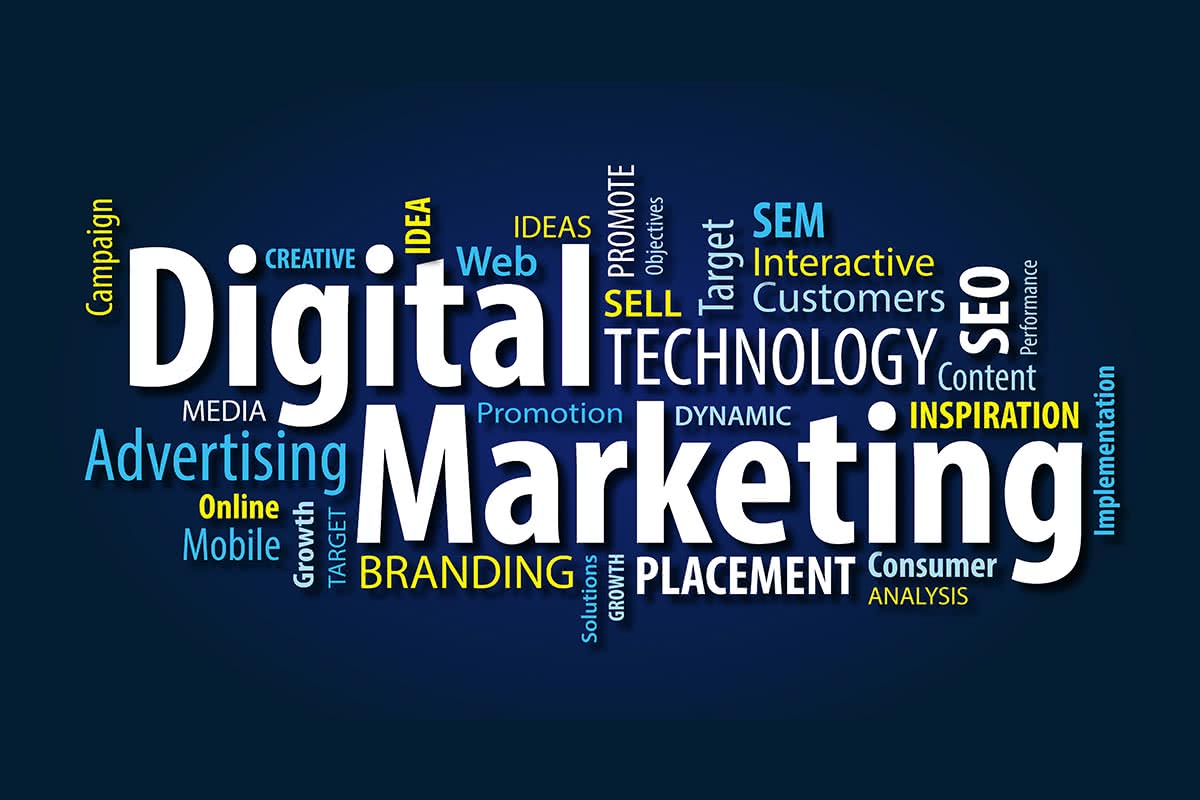Transform Your Business With Data-Driven Digital Advertising
In today's rapidly developing industry, leveraging data-driven digital advertising and marketing has actually come to be crucial for companies aiming to improve their affordable side. By using analytics to gain understandings right into customer habits, organizations can tailor their advertising methods for maximum impact.
Comprehending Data-Driven Advertising And Marketing
Data-driven marketing is progressively acknowledged as an important technique for services aiming to improve their advertising performance. This method counts on the systematic collection, evaluation, and application of data to educate marketing methods and choices. By leveraging different data sources, consisting of consumer demographics, behavior patterns, and market fads, businesses can develop targeted projects that resonate with certain target markets.
At its core, data-driven advertising and marketing includes incorporating analytics into the marketing process. This permits for real-time understandings right into project efficiency, allowing marketing experts to make enlightened modifications and optimize their approaches. By recognizing consumer preferences and interaction degrees, organizations can craft tailored messaging that is more likely to convert possible consumers right into faithful clients.
Additionally, data-driven marketing cultivates a society of accountability within companies. As businesses accept data-driven advertising, they position themselves to react effectively to altering market dynamics and customer expectations.
Advantages of Data Analytics

One of the primary benefits is the capability for customized advertising and marketing. Information analytics allows organizations to segment their audience effectively, customizing messages and offers that resonate with specific groups. This level of customization not only improves interaction prices however additionally promotes brand name commitment.
Moreover, data analytics helps with real-time decision-making. Marketing professionals can keep an eye on campaign performance continually, changing techniques based upon immediate comments and outcomes. This dexterity results in enhanced source appropriation and boosted return on investment.
Furthermore, predictive analytics encourages services to anticipate future patterns and customer demands, enabling for proactive approaches as opposed to reactive steps. This foresight can be a considerable affordable advantage in today's dynamic market landscape.
Trick Tools and Technologies

One of the crucial modern technologies is Client Partnership Management (CRM) software application, which enables businesses to handle consumer interactions and analyze data throughout the customer lifecycle. In addition, advertising and marketing automation systems enhance repetitive jobs, assisting in personalized interaction and lead nurturing.

Information visualization devices, such as Tableau and Google Data Workshop, aid specialists analyze complex data sets, providing insights in a quickly digestible format. Analytics platforms like Google Analytics provide indispensable metrics on web site web traffic and user actions, making it possible for marketing professionals to optimize their strategies - Digital Marketing Lockhart.
Social media site analytics devices, such as Hootsuite and Sprout Social, use insights into target market involvement and web content performance throughout various systems. Last but not least, A/B screening devices, like Optimizely, enable marketers to explore various methods, making sure that data-driven decisions are consistently improved. By leveraging these technologies, companies can foster a data-centric society, bring about a lot more effective electronic marketing projects.
Applying Efficient Methods
To successfully carry out effective methods in electronic advertising, companies need to first align their objectives with workable insights originated from data analytics. This alignment enables businesses to customize their marketing efforts, guaranteeing they resonate with target market. By leveraging information from numerous channels, such as social media, email advertising and marketing, and site moved here analytics, firms can recognize patterns, choices, and behaviors that inform their technique.
Following, it is critical to prioritize client segmentation. By categorizing their audience based on demographics, passions, and buying actions, organizations can produce tailored advertising campaigns that drive engagement and conversion. Automation devices can promote this process, allowing marketers to supply timely, appropriate content to specific segments.
Additionally, embracing a dexterous advertising method can boost responsiveness to market changes and consumer comments. Consistently analyzing project efficiency and making data-driven changes can optimize outcomes and source allocation.
Lastly, promoting a society of partnership between marketing, sales, and information analytics teams is crucial. This multidisciplinary strategy makes sure that insights are successfully shared and incorporated into more comprehensive organization methods, inevitably driving continual development in an affordable landscape.
Determining Success and ROI
Exactly how can organizations effectively gauge success and return on investment (ROI) in electronic advertising? The response lies in developing clear objectives and using the ideal metrics. Start by specifying essential performance indicators (KPIs) that align with business objectives, such as conversion rates, customer acquisition expenses, and engagement metrics. These KPIs give a measurable basis for evaluating the performance of digital marketing initiatives.
Making use of analytics devices is necessary in this process. Platforms such as Google Analytics and social networks insights allow companies to track customer behavior and project efficiency in real time. By evaluating information, organizations can recognize which approaches yield the very best results and allocate sources accordingly.
Furthermore, utilizing ROI computations can offer a clearer picture of monetary performance (Digital Marketing Lockhart). This consists of measuring the income produced from electronic advertising efforts versus the total expenses incurred. A simple formula is (Net Profit/ Expense of Investment) x 100 to establish the ROI portion
Eventually, a thorough strategy that integrates quantitative and qualitative evaluation will certainly enable companies to examine their electronic advertising and marketing success accurately and make notified choices for future projects. This data-driven mindset is crucial for constant enhancement and sustainable development.
Final Thought
In conclusion, the combination of data-driven electronic advertising stands for try this website a transformative technique for businesses looking for to improve interaction and foster brand name loyalty. By leveraging analytics to notify techniques, organizations can optimize Bonuses source appropriation, adjust to market characteristics, and enhance return on investment. The use of key devices and modern technologies further facilitates this procedure, making sure that advertising and marketing initiatives are aligned with customer behavior and assumptions. Inevitably, accepting data-driven methods is important for sustained competitive advantage in a swiftly advancing landscape.
In today's quickly developing industry, leveraging data-driven electronic advertising and marketing has actually become crucial for services intending to enhance their affordable edge (Digital Marketing Lockhart).Data-driven advertising is increasingly acknowledged as a crucial strategy for companies aiming to boost their advertising effectiveness.At its core, data-driven advertising involves incorporating analytics right into the marketing procedure. As companies welcome data-driven marketing, they position themselves to respond effectively to altering market dynamics and consumer assumptions
In final thought, the assimilation of data-driven electronic advertising and marketing stands for a transformative technique for organizations looking for to enhance interaction and foster brand loyalty.